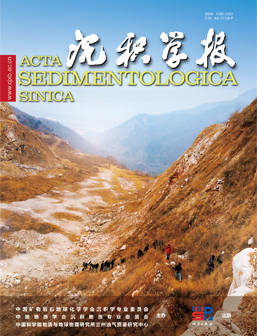Division of Graptolite Zones in the Wulalike Formation on the Western Margin of Ordos Basin and Their Implications for Sedimentary Evolution
doi: 10.14027/j.issn.1000-0550.2024.077
- Received Date: 2024-04-07
- Available Online: 2024-07-22
-
Key words:
- Graptolite zone division /
- Biostratigraphic framework /
- Wulalike Formation /
- Sedimentary evolution
Abstract: [Objective] In the west margin of Ordos Basin, a set of marine graptolite shale is developed in the Wulalike Formation. In recent years, natural gas has been continuously discovered in this set of graptolite shale, and industrial oil flow can be produced, proving that the Wulalike Formation has great exploration potential. This study aims to explore the development characteristics of graptolites in the Wulalike Formation, establish a graptolite biostratigraphic framework, and analyze the sedimentary evolution laws of the Wulalike Formation. [Methods] By analyzing the graptolite characteristics of cored wells and comparing the range of graptolite extension, the temporal attribution of the Wulalike Formation was clarified. Based on the identification results of graptolites, the division of single-well graptolite zones and the establishment of biostratigraphic frameworks were conducted. The distribution characteristics of the graptolite zones were discussed, and the spatial evolution characteristics of black shale were analyzed in combination with the lithological development laws. Additionally, the variation of relative sea level was explored based on the response of graptolite morphological complexity to marine transgression. [Results] The results indicate that: ①The Wulalike Formation belongs to the Darriwilian-Sandbian stages of the Middle to Late Ordovician. Based on graptolite development characteristics, the Wulalike Formation is divided into four graptolite zones, namely the Pterograptus elegans zone, Jiangxigraptus vagus zone, Nemagraptus gracilis zone, and Climacograptus bicornis zone, from bottom to top. ②Through a comparative analysis of the developmental characteristics of the graptolite zones, it is believed that four complete graptolite zones are developed near Well Qitan 9 in the northern Wulalike Formation of the study area, while the Pterograptus elegans and Jiangxigraptus vagus zones are absent in the southern part. ③ The Pterograptus elegans and Nemagraptus gracilis zones in the Wulalike Formation represent two marine transgression periods, which transition upward into the Climacograptus bicornis zone and then into the Lashizhong Formation, during which the relative sea level gradually decreases. [Conclusion] The black shale at the bottom of the Wulalike Formation shows strong diachronism from Pterograptus elegans in Qitan Well 9 to Nemagraptus gracilis in Yintan Well 2. Along the western margin of the Ordos Block, the black shale gradually becomes younger in strata to the south, and the sedimentary center gradually migrates southward. The diachronism of the black shale may manifest as a typical characteristic of "degradational stacking", forming an upward-shallowing stacking pattern, resulting in the black shale of the Wulalike Formation crossing a forced marine regression interface. Additionally, the diachronism of the black shale may also be caused by marine transgression deposition and the progradation process in the highstand systems tract, resulting in the progradation of the black shale towards the south or southwest. Due to the limitations of core sampling, the causes of the diachronism of the black shale in subsequent studies still require further analysis of the formation ages of the limestone at the top and bottom of the Wulalike Formation, along with verification using seismic data. The establishment of a biostratigraphic framework based on graptolite zones provides important guidance for understanding the stratigraphic and sedimentary evolution of the Wulalike Formation on the western margin of the Ordos Basin.
| Citation: | Division of Graptolite Zones in the Wulalike Formation on the Western Margin of Ordos Basin and Their Implications for Sedimentary Evolution[J]. Acta Sedimentologica Sinica. doi: 10.14027/j.issn.1000-0550.2024.077 |






 DownLoad:
DownLoad: